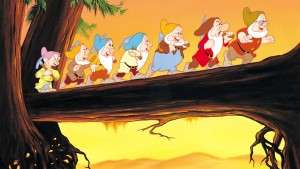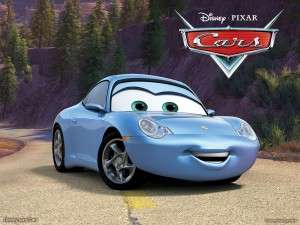Sociologists find children's films present inequality as benign or virtuous

Snow White's seven dwarfs head off to the mines each day with a spring in their step and a song on their lips.
In Cars, an anthropomorphic Porsche named Sally finds her job as a lawyer to stressful so she moves to a working-class town where she finds an easier life.
These and other wildly popular movies that enchant children with magical tales of love, royalty, riches and happiness portray social class inequality in potentially harmful ways, a new Duke University study finds.
Sociologist Jessi Streib and two undergraduate students, Miryea Ayala and Colleen Wixted, watched all 36 G-rated movies that have grossed more than $100 million as of January 1, 2014, studying the characters in each to see what social class they represent and whether they scale the social ladder or fall off it. Many were Disney or Pixar movies from the last decade or so, while a few, like Mary Poppins and The Sound of Music, are considered generational classics.
The study found that the movies presented a less-than-nuanced view of social class, often focusing on up-from-the-bootstraps characters who reap huge social and economic rewards largely from hard work, moral fortitude, and playing by the rules.

"The big theme is that inequality is benign," said Streib, an assistant professor of sociology. "Being poor isn't a big deal. Being working class makes you happy. Anyone who wants to get ahead, and is ambitious and is a good person, can do so. And the rich happily provide for everyone else. Obviously, that's not exactly how the world works."
The study was published last month in the Journal of Poverty.
The study found a series of children's characters who were economically top heavy. Of 67 main characters, 38 would be considered upper- or upper-middle class. Just 11 would be considered working class, and just three primary characters – or 4 percent of the total, would be considered poor by contemporary standards.
To compare, roughly 25 percent of American children live in poverty. And in real life, less than one-tenth of people in the lowest economic bracket rise to the top.
"In Disney movies, of course," Streib noted, "They all do."
The study also found that movies often minimize economic hardships. One example noted is Aladdin, the story of a young, homeless boy who befriends a princess named Jasmine. The two trade 'horror' stories, suggesting that Aladdin's life on the streets is roughly equivalent to Jasmine's struggles because servants tell her "where to go and how to dress."
Streib's paper excerpted this bit of Aladdin dialogue:
Aladdin: "The palace looks pretty amazing, huh?"
Jasmine, (disappointed, responding about the palace where she lives): "It's wonderful."
Aladdin: "I wonder what it'd be like to live there, and have servants and valets."
Jasmine: "Oh, sure. People who tell you where to go and how to dress."
Aladdin: "That's better than here. You're always scraping for food and ducking the guards."
Jasmine: "You're not free to make your own choices."
Aladdin: "Sometimes you feel so …"
Jasmine: "You're just …"
Aladdin and Jasmine, simultaneously: "Trapped."
Though these movies are fictional, their popularity does raise concerns about perpetuating myths related to inequality and the struggles lower-class people have climbing the ladder, Streib said.
"But would people really want to watch an honest movie?" she concedes? "Probably not."
More information: Jessi Streib et al. Benign Inequality: Frames of Poverty and Social Class Inequality in Children's Movies, Journal of Poverty (2016). DOI: 10.1080/10875549.2015.1112870
Provided by Duke University




















